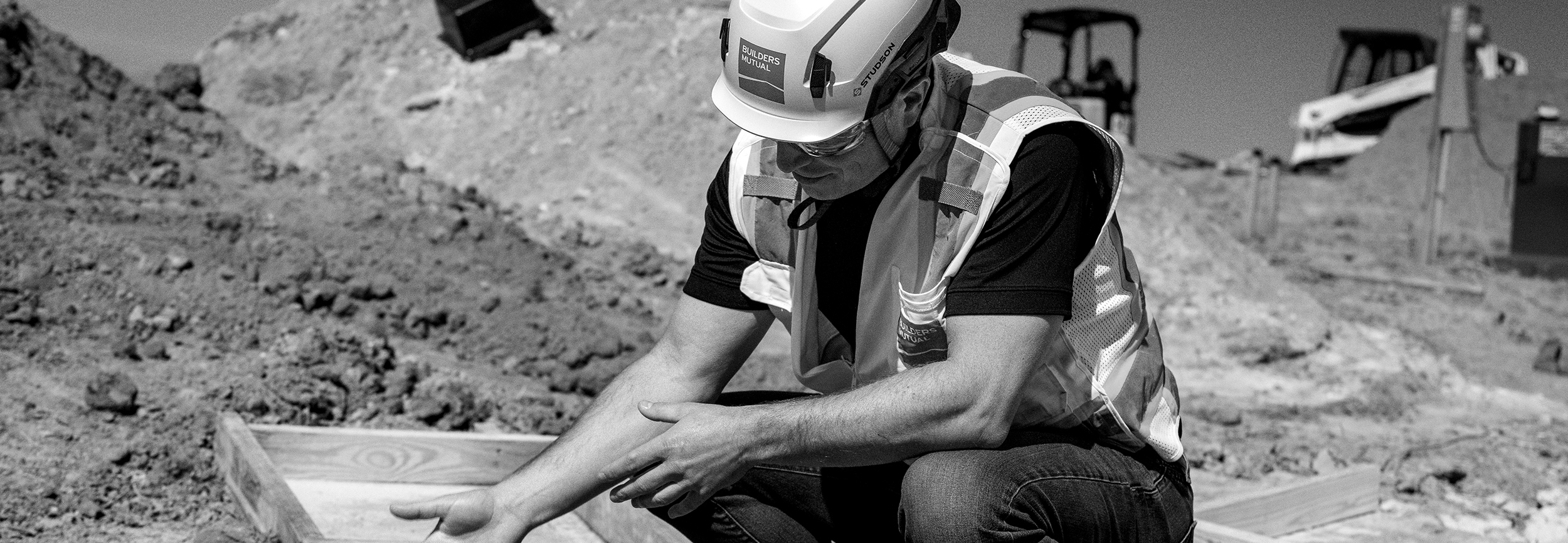Guardrails may seem like a small part of your overall job-site safety plan, but they have the power to save lives and protect workers and visitors from injury. Risk Management expert Sean Purcell joins us to share a real incident that could have been prevented with proper guardrail use. We will review the context of the accident as well as the measures that could have prevented injury.
The Situation
This case involves an employee who worked for a custom home builder. He’d spent 20 years in the field performing residential insulation work. To protect his privacy, let’s call this employee Nick.
Nick was a seasoned veteran of construction job-sites who had been through many safety meetings regarding fall protection during his career; however, the safety culture at this company was slack.
Three years ago, his company began an informal Stop Work Authority (SWA) program designed to increase the responsibility of workers who see unsafe conditions. The SWA program was supposed to be reviewed during new-hire orientation, but Nick never received instruction on this specific program or the steps to take to stop work.
Additionally, workers at this company often worked without proper fall protection in place.
The Incident
On the day of the incident, the crew arrived early in the morning and got started. No one was in a rush or attempting to work too quickly. Nick was working as a member of a crew that was performing air seal work on the second floor of a new residential home.
The crew had not been working long before the incident occurred. Nick was walking backward spraying foam from a can along the rim joist when he reached an unprotected stairway opening. As he stepped back with his right foot, he stepped through the stairway opening. Nick fell head first about eight feet to the stairs below. He continued to tumble another four feet down the rest of the stairs to the first floor.
The Problems
With this context in mind, there were five immediate safety failures that led to the incident:
- The general contractor failed to enforce the use of fall protection onsite or to lead a review of job-site hazards before starting the day, which should have caught any missing guardrails. The GC has the primary responsibility for the safety culture on the job-site.
- The framer failed to install guardrails (as required by OSHA) after creating the fall exposure at the stairs. The moment a six-foot vertical drop is established, fall protection is required.
- The sales employee should have informed the GC that no work would be done without proper guardrails in place.
- The crew lead should have recognized the hazard and stopped work using the SWA program. When guardrails are not in place, the crew lead should notify everyone, including the GC, of the issue and pause work until the hazard is corrected.
- Given his industry experience, the injured employee should have recognized the hazard and made sure the crew leader took the necessary steps to ensure the job-site was safe before work began.
As you see, everyone on the job-site plays a role in creating a safe work environment. If any of the people mentioned above had followed OSHA fall protection rules, this incident would not have occurred.
The Result
Following the accident, the GC recognized the need for more training to improve the safety culture. All of the company’s employees participated in a 10-hour OSHA training session. Moving forward, all of their employees will be trained on a formal SWA program regardless of how long they have been at the company.
Nick was lucky; none of his injuries required surgery. However, these types of trainings shouldn’t wait until someone is hurt. We encourage you to review the training programs and resources you have in place today.
Next in our guardrail series, we will review more real-life incidents and examine the cost of missing guardrails.




 Find an
Find an